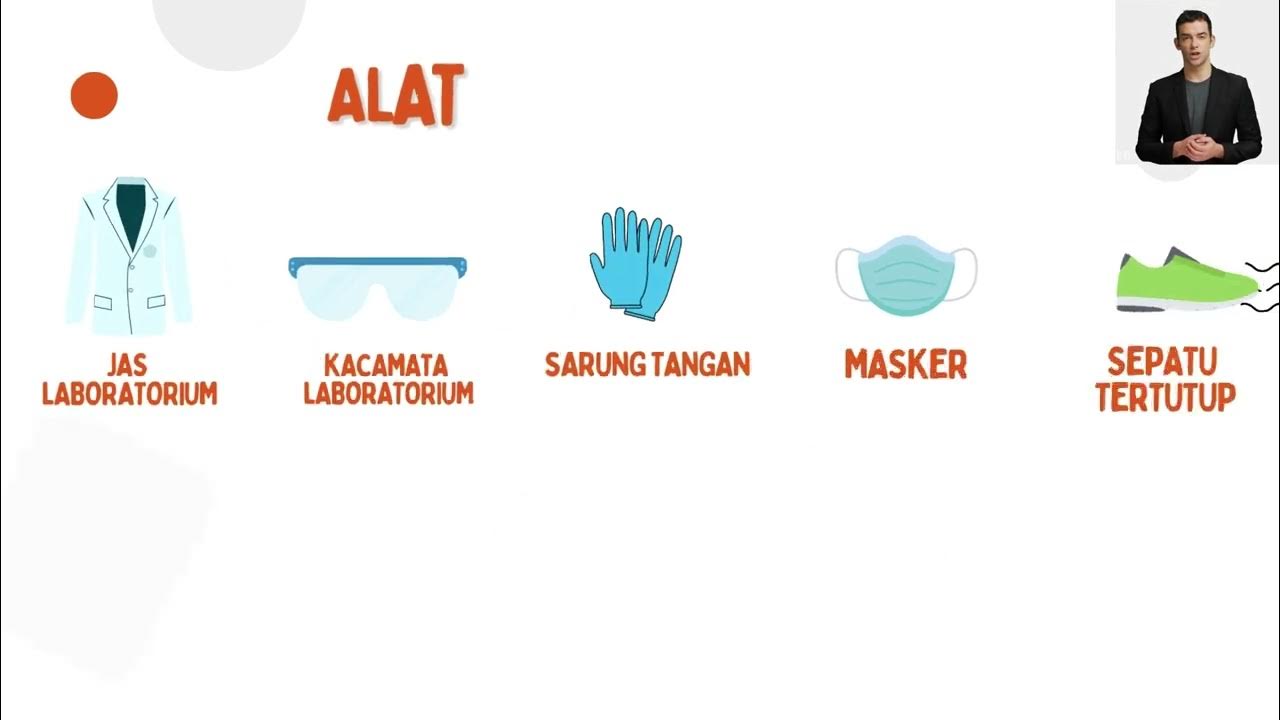Safety Video by American Chemical Society (1991)
Summary
TLDRThis script emphasizes the importance of safety in a chemistry lab, detailing procedures to handle chemicals, use equipment, and respond to emergencies. It covers the correct use of containers, mixing chemicals, Bunsen burners, thermometers, and protective gear. The video also addresses potential accidents, such as chemical exposure, fires, and glassware breakage, and stresses the need for immediate and proper response to maintain a safe learning environment.
Takeaways
- 🧪 Safety is paramount in the chemistry lab, and adhering to strict procedures is crucial for a safe and enjoyable experience.
- 🔬 Always use small containers for chemicals to prevent accidents, and inform the teacher immediately if an accident occurs.
- 📝 Read and reread labels and instructions before using chemicals to ensure correct usage and avoid hazardous mixing.
- 💧 When diluting concentrated acids, always add the acid to water, not the other way around, to prevent dangerous reactions.
- 🚫 Keep chemicals away from your face, and never taste, touch, or smell them directly to avoid harm to your senses.
- 🌫 Work with volatile chemicals under a fume hood to protect yourself from inhaling harmful vapors.
- 🍃 Dispose of leftover chemicals properly in designated waste containers to maintain purity and prevent contamination.
- 🔥 Use a Bunsen burner correctly and safely, following all guidelines to prevent fires and ensure even heating.
- 🌡 Handle thermometers with care, within their suitable temperature range, and never shake them to avoid breakage.
- 🧴 Use a pipette or pipetter bulb for drawing out chemicals to avoid contact with potentially harmful substances.
- 👕 Wear appropriate clothing and protective gear, including lab aprons, closed-toe shoes, and safety goggles, to minimize risks.
Q & A
What is the primary focus of the chemistry lab course?
-The primary focus of the chemistry lab course is to gain new knowledge by doing things, not just reading about them.
Why is safety important in a chemistry lab?
-Safety is important because working with new equipment and techniques can be dangerous if strict safety procedures are not followed.
What should you do if you have an accident in the lab?
-If you have an accident, you should always inform your teacher immediately.
Why should you use small containers in the lab?
-Small containers are easier to control, which helps prevent accidents.
What is the correct way to dilute concentrated sulfuric or phosphoric acid?
-You should always add the acid to the water, not the reverse.
How should you handle chemicals to avoid contamination?
-Use clean glassware, pour out of reagent bottles without returning excess chemicals, and dispose of leftovers in the proper waste container.
What is the safe way to smell a chemical in the lab?
-Hold it away from your face and waft the vapors towards your nose if your teacher gives you permission.
What should you do if a chemical spill occurs?
-Report spills immediately to your teacher and let them clean it up.
How should you heat volatile organic liquids in the lab?
-Volatile organic liquids should be heated in a heating mantle or steam bath in a hood, not over a Bunsen burner.
What should you wear for proper safety in the lab?
-Wear close-fitting clothing made of sturdy materials, long pants or skirts, closed leather shoes, and tie up long hair. Also, remove rings and watches, and wear goggles with side shields and the appropriate gloves.
How should you deal with broken glass or spilled chemicals?
-Notify your teacher, who will clean up the broken glass or spilled chemicals using appropriate methods and equipment.
What should you do in case of a fire in the lab?
-For small fires in containers, turn off the burner and cover the fire. For larger fires, use a fire extinguisher and evacuate the building if necessary.
How can you ensure the centrifuge is balanced?
-Place equally filled test tubes opposite each other in the centrifuge to balance it.
What is the proper way to handle a thermometer in the lab?
-Do not shake the thermometer, use it within its appropriate temperature range, and handle it carefully to avoid breaking.
Why is it important to keep personal belongings out of lab aisles?
-Personal belongings in the aisles can trip someone and cause accidents.
Outlines

このセクションは有料ユーザー限定です。 アクセスするには、アップグレードをお願いします。
今すぐアップグレードMindmap

このセクションは有料ユーザー限定です。 アクセスするには、アップグレードをお願いします。
今すぐアップグレードKeywords

このセクションは有料ユーザー限定です。 アクセスするには、アップグレードをお願いします。
今すぐアップグレードHighlights

このセクションは有料ユーザー限定です。 アクセスするには、アップグレードをお願いします。
今すぐアップグレードTranscripts

このセクションは有料ユーザー限定です。 アクセスするには、アップグレードをお願いします。
今すぐアップグレード関連動画をさらに表示

Keselamatan Kerja di Laboratorium IPA Mata Kuliah Pendalaman Materi IPA

Orientation to Laboratory Safety - [Lab Worker Safety Training]

Gerenciamento, Segurança e Descarte de resíduos Químicos (UEL)

Pengenalan Alat Laboratorium

Lab Safety 1 Before Experiment

Aula Prática: EPI's e EPC's no Laboratório de Química
5.0 / 5 (0 votes)
